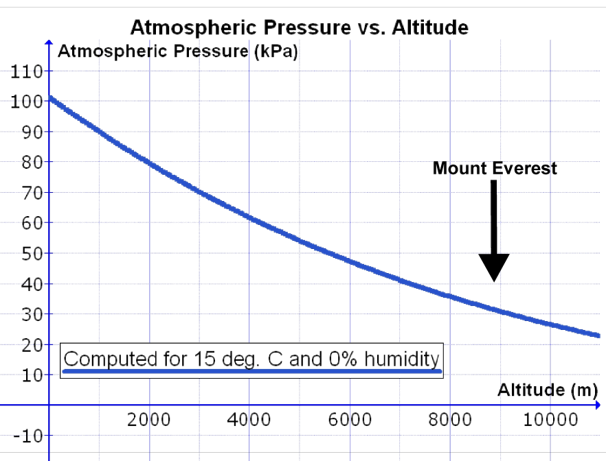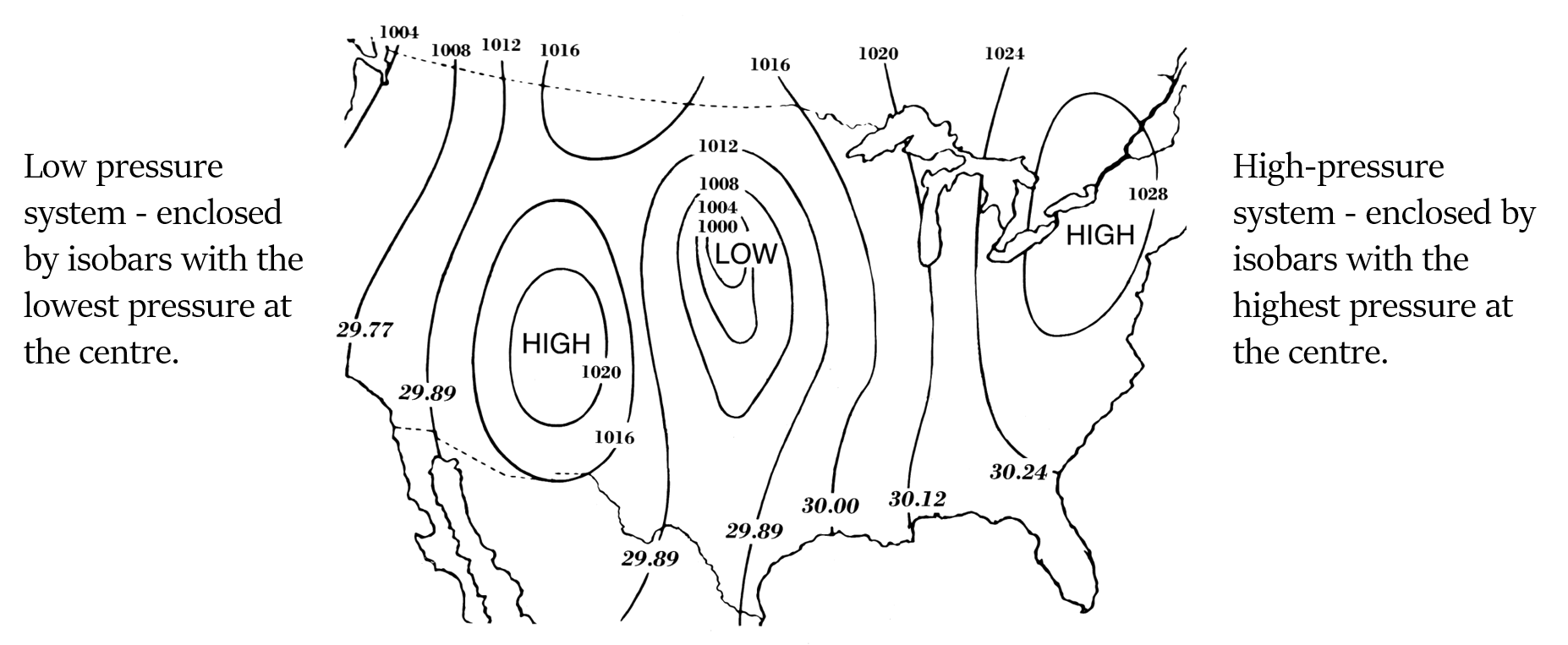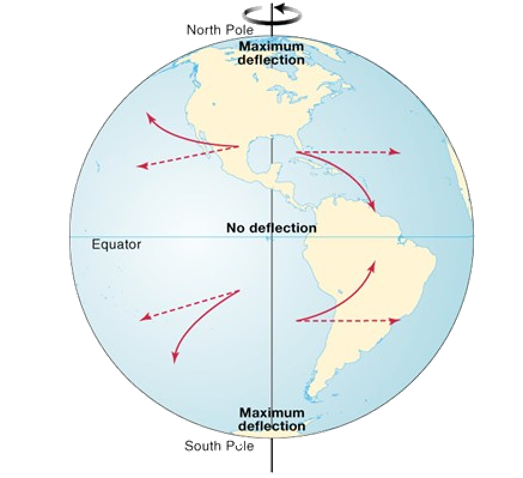Concept of Atmospheric Circulation
In a previous article on variation in solar radiation, we saw how insolation received by various places on the Earth varies. And, so does the temperature.
This uneven distribution of temperature over the surface of the earth, causes variations in the atmospheric pressure. It causes vertical and horizontal movement of air in our atmosphere.
Here’s a snapshot of the process of Atmospheric Circulation:

In this article, we will study various factors involved in the process of Atmospheric Circulation.
Atmospheric Pressure
Variation in atmospheric pressure is the primary cause of air motion, i.e. wind.
What is Atmospheric Pressure?
It is the weight of a column of air contained in a unit area from the mean sea level to the top of the atmosphere.
 Note
NoteSo as to eliminate the effect of altitude on pressure, atmospheric pressure at any place is measured after being reduced to sea level (so that we can compare the pressures at various places which are at different altitudes).
Some facts regarding Atmospheric Pressure
Unit - milibar.
Average Atmospheric pressure at sea level - 1,013.2 milibar.
Measurement - mercury barometer or the aneroid barometer.
Why atmospheric pressure decreases with height?
At any given place the pressure decreases with height, because the amount of air column above decreases. Also, the gravity decreases which leads to less dense air as we increase altitude. (However its absolute value at any given elevation varies from place to place.)
Now, variation in atmospheric pressure may be vertical or horizontal.
Vertical Variation
Pressure decreases rapidly with height in the lower atmosphere. (about 1 mb per 10 m increase in elevation) However, the rate of decrease is not always the same.
However, the rate of decrease is not always the same.
 Why even with such steep vertical pressure gradient, there are no strong upward winds?
Why even with such steep vertical pressure gradient, there are no strong upward winds?Even with such steep vertical pressure gradient, there are no strong upward winds, even though vertical pressure gradient force is much larger than that of the horizontal pressure gradient.
That’s because the vertical pressure gradient is balanced by equal but opposite gravitational force.
Horizontal Variation
Horizontal variation of pressure determines wind direction and velocity.
Isobars - lines connecting places having equal pressure.
World Distribution of Pressure belts
Equatorial low - Pressure is low near the equator.
Subtropical highs - Along 30° N and 30° S there are high-pressure areas/belts.
Sub polar lows - Further pole wards along 60° N and 60° S are the low-pressure areas/belts.
Polar highs - Pressure is high near the poles.
Oscillation of pressure belts
These pressure belts oscillate with the apparent movement of the sun throughout the year.
For example, in the northern hemisphere:
During winters - pressure belts move southwards and
During summers - pressure belts move northwards.
Forces Affecting the Velocity and Direction of Wind
Horizontal winds near the earth surface are affected by four forces:
- Pressure gradient force
- Frictional force
- Coriolis force
- Gravitational force (which acts downward)
Pressure gradient force
Pressure gradient force causes the winds to blow. It impacts the direction and velocity of winds.
Differences in atmospheric pressure leads to creation of a force. Wind blows from high pressure to low pressure. It decides the direction of winds.
Pressure gradient - It is the rate of change of pressure with respect to distance. It decides the velocity of winds.

Friction
The wind near the surface experiences friction. Obviously the friction is greatest at the surface but its influence extends upto an elevation of 1 - 3 km.
Over the sea surface the friction is much less than that over the land.
Friction affects the speed of the wind (not the direction).
Coriolis force
Coriolis force - force exerted by the rotation of the earth.
It affects the direction of the wind. It deflects the wind to the right direction in the northern hemisphere and to the left in the southern hemisphere.

Higher the wind velocity (i.e. when pressure gradient force is high), more is the deflection.
Coriolis force is maximum at the poles and absent at the equator.
Direction of Coriolis force
Coriolis force acts perpendicular to the pressure gradient force (which in turn is perpendicular to an isobar)

 Why tropical cyclones are not formed near the equator?
Why tropical cyclones are not formed near the equator?The Coriolis force is zero at the equator. So, the wind blows perpendicular to the isobars. This means that, no cyclone is formed, because the wind does not blow around the low-pressure areas. Rather the wind blowing perpendicular to the isobars fills up the low pressure area pretty quickly.
